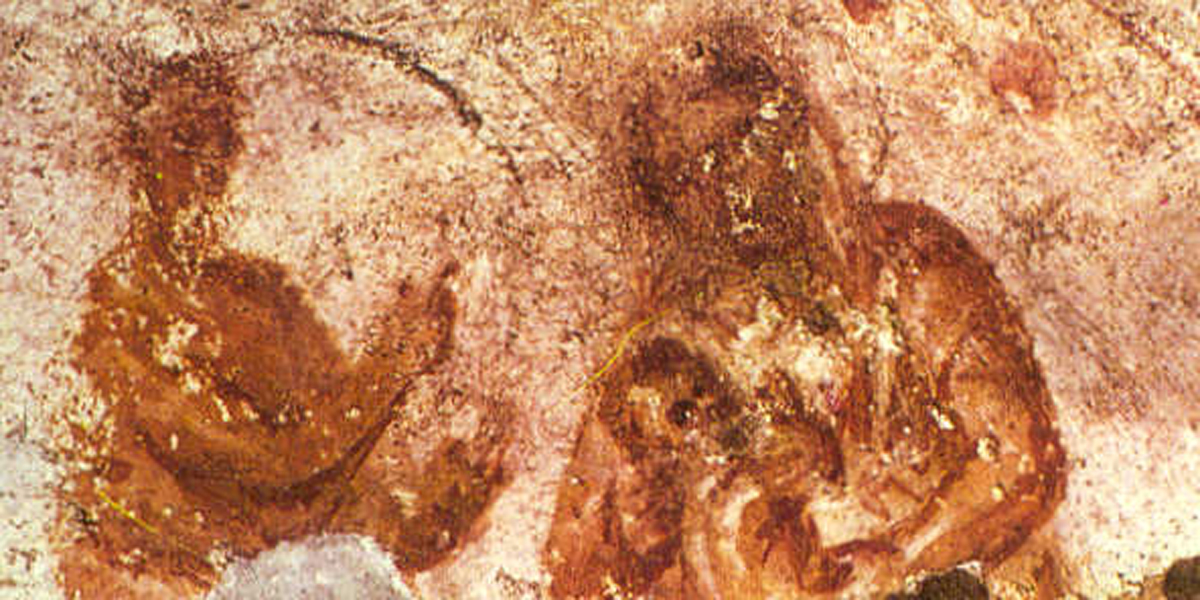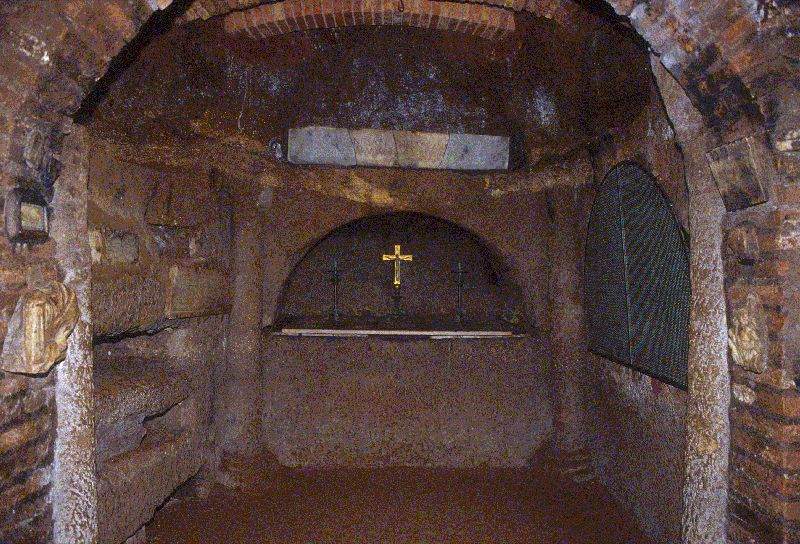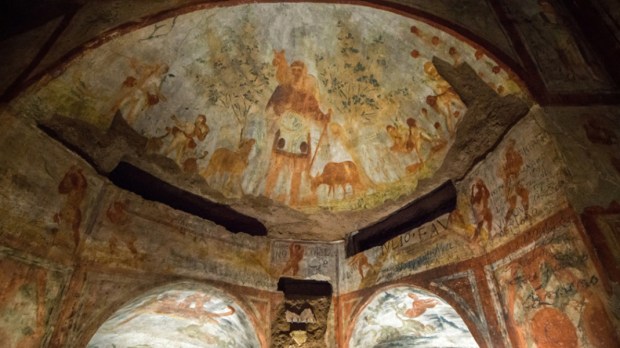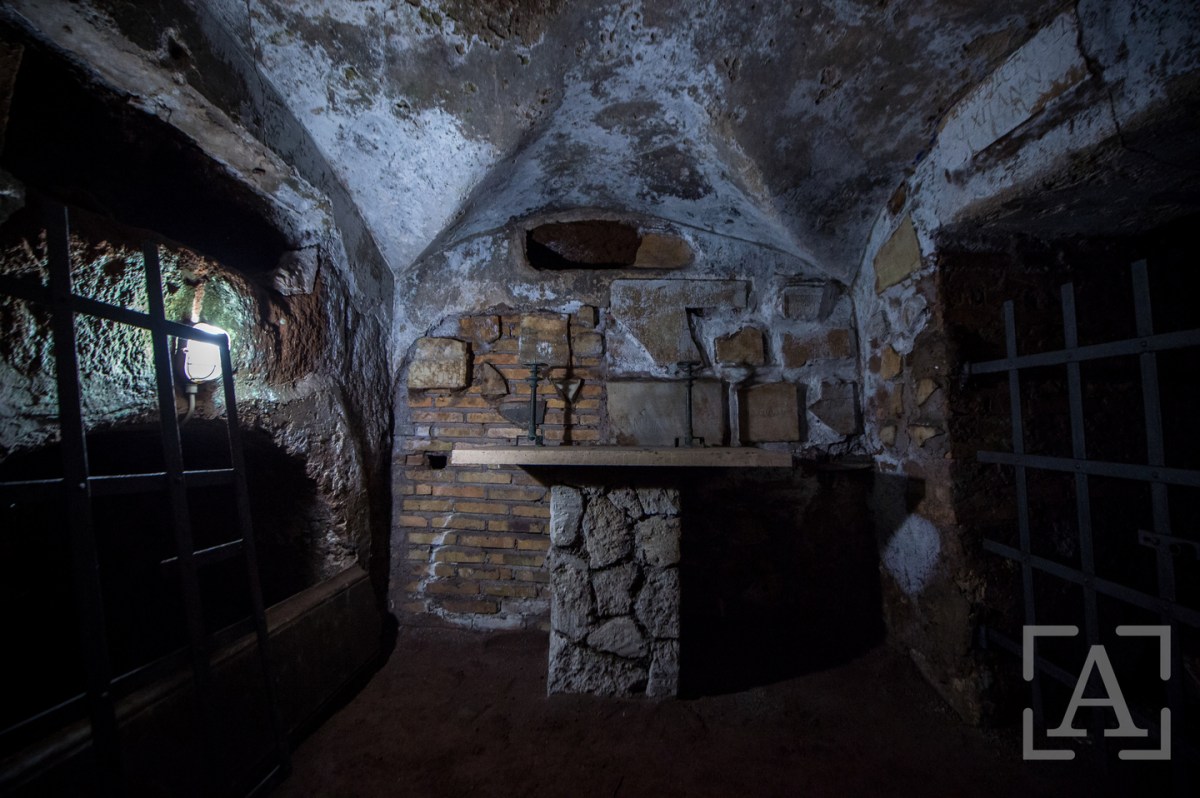Lenten Campaign 2025
This content is free of charge, as are all our articles.
Support us with a donation that is tax-deductible and enable us to continue to reach millions of readers.
Aside from the New Testament itself and some of the early letters of the Church Fathers, the catacombs are the oldest witness to the Christian faith.
The oldest of them, the Catacombs of Domitilla, dates back to the 2nd century. These catacombs were the burial site for a Roman aristocrat named Flavia Domitilla, whose uncle Domitian served as emperor from 81 to 96. Her husband Flavio Clemente held the office of consul during Domitian’s reign but was condemned to death in the year 95.
See the gallery below for photos of the Catacombs of Domitilla:
According to some scholars, the last book to be written in the New Testament—the Gospel of John—was composed during Domitian’s reign. Those years also coincide with one of the earliest Fathers, Clement, a pope whose epistle dates back to this period.
The inscriptions and art in the catacombs thus offer a window into the mind and heart of the very early Church, showing how the faith that was preached in the gospels and epistles was lived out by the first Christians. And the faith that these monuments testify to bears the distinctive marks of Catholicism.
Prayers for the dead
The catacombs are replete with inscriptions that offer abbreviated prayers known as acclamations for the dead. Here are some of them:
Pax tibi | Peace to you. Aeterna lux tibi | Eternal light for you. Pax tibi cum angelis | Peace for you with the angels. Pax tibi cum sanctis | Peace for you with the saints. Deus tibi refrigeret | May God refresh you. (Sources: The Catholic Encyclopedia, Publications of the Catholic Truth Society.)
Some of the inscriptions are more explicit in asking for prayers for the dead. For example,
Ut quisquis de fratribus legerity, roget Deum ut sancto et innocent spiritu ad Deum suscipiatur. If any of the brethren reads this, let him ask that this holy and innocent soul may be received by God (Publications of the Catholic Truth Society.)
How sure can we be that early Christians really prayed for the dead? Are these short invocations enough? Fortunately there is testimony outside of the catacombs that validates their message. One is Tertullian, who lived from around 155 to 240. In On Monogamy, he writes the following in reference to widows:
Indeed, she prays for his soul, and requests refreshment for him meanwhile, and fellowship with him in the first resurrection; and she offers her sacrifice on the anniversaries of his falling asleep. For, unless she does these deeds, she has in the true sense divorced him, so far as in her lies; and indeed the more iniquitously.
Tertullian is not the only early witness to this practice. In the Confessions, St. Augustine also records his mother Monica asking him to pray for her after her death.
Prayers to the dead
The catacombs also contain instances of prayers to the dead:
Roges pro nobis | Make petition for us. Pete pro sorore tua | Pray for your sister. Pete pro parentes tuos | Pray for your parents. (Publications of the Catholic Truth Society.)
One inscription in the Cemetery of Praetextatus directly asks for the intercession of the deceased when he meets Christ the judge at the moment of his death:
Succurrite cum judicabitis. | Help us when you come to the judge. (Publications of the Catholic Truth Society.)
Veneration of Mary
The catacombs also reflect an early devotion to Mary. The Catacombs of Priscilla contain the oldest known image of Mary, apparently nursing Jesus as a prophet addresses them and the Star of Bethlehem shines above them.

Another fresco, in the Catacombs of St. Agnes, shows Mary in between Sts. Peter and Paul, indicating her role as the Mother of the Church, according to Dr. Mark Miravalle, a theologian at the Franciscan University of Steubenville. Miravalle adds,
It is also clear from the number of representations of the Blessed Virgin and their locations in the catacombs that the Mother of Jesus was also recognized for her maternal intercession of protection and defense. Her image was present on tombs, as well as on the large central vaults of the catacombs. Clearly, the early Christians dwelling in the catacombs prayed to Mary as intercessor to her Son for special protection and for motherly assistance. As early as the first century to the first half of the second century, Mary’s role as Spiritual Mother was recognized and her protective intercession was invoked.

Again, the testimony of the catacombs is consistent with the writing of the early Church Fathers. Tertullian and St. Augustine, for example, were among several Church Fathers who venerated Mary as the New Eve who undid the sins of the first Eve. Just how early devotion to Mary took root can be seen in the Sub Tuum Praesidium prayer, which dates back to at least the 200s.
The Eucharist
The catacombs are also full of images of the Eucharist, including wheat and grapes. In some instances, the images depict scenes from the gospels that are related to the Eucharist, like the multiplication of the loaves and fishes, the banquet on the shore after the resurrection, and the wedding at Cana, according to the Catholic Encyclopedia.
The oldest Eucharistic fresco is the Fractio Panis, or “Breaking of the Bread,” located in the Catacomb of St. Priscilla. Two frescoes of the miraculous multiplication are in the crypt of Lucina, in the Catacomb of St. Callistus, according to the Catholic Encyclopedia. (The Catacombs of St. Callistus contain some of the most extensive underground networks in Rome and are open to the public. They house the famous Crypt of the Popes.)


